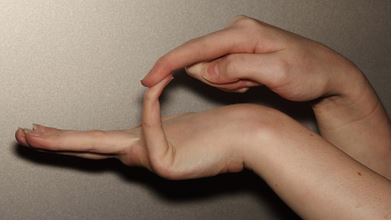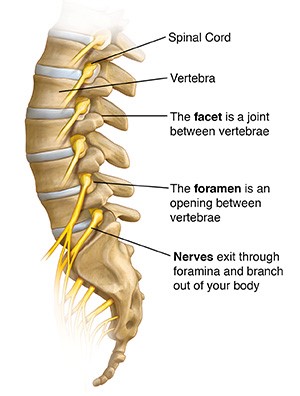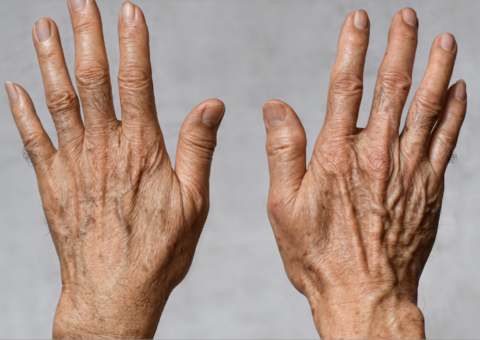
“Doc, I don’t know what I’ve done. I have never had back pain and I haven’t done anything out of the norm!”
Sounds familiar, doesn’t it? Well, statistics show that you’re probably not the only one:
Back pain – whether referred to as a spasm, sciatica or a slipped disc – is a global pandemic, affecting 80% of the population at some point in life & 1/3 of the population on an annual basis!
![]() “I just can’t figure out what I’ve done to put my back out.”
“I just can’t figure out what I’ve done to put my back out.”
Although its expected for a new ‘back-pain sufferer’ to attempt to pinpoint a single causative incident, Dr. Kevin Aaron tells us that back pain is most likely due to the cummulative effects of multiple strains. As in, bending down to pick up your shoe may simply be ‘the straw that broke the camel’s back’ (a.k.a the final event in a cascade of stressful forces absorbed by your body).

- Bend 1 finger backwards until you feel the strain, and then release it. The minor pain should rapidly subside.
- Try this again – except this time bend your finger even further until when you start feeling the pain, and then keep it there for a sustained period of time. You may notice that it takes a longer time to recover. If you ignore the pain and fail to listen to your body’s warning system, then the ‘overstretched’ ligaments and surrounding soft tissue will eventually tear.
This finger described experiment by Robin Mckenzie is analogous to the effects of sitting for prolonged periods on your lower back, in which the ligaments and soft tissues become strained due to poor postural habits.


Common, every day back ‘stressful forces’ include:
- Sitting in a bad position for a long time
- Leaning over/ forward bending
- Heavy lifting
- Lying in a poor position for a prolonged time (think, sleep!)
Back pain can be wide-spread (felt centrally, only on one/both sides of lower back; but pain may also radiate into the buttock, thigh, leg or even foot!) & variable in nature – presenting as numbness or weakness in severe instances.
![]() An integrative approach to back pain – it’s often far more than what meets the eye.
An integrative approach to back pain – it’s often far more than what meets the eye.

You’re a mechanical being, consisting of many different moving parts. Back pain often arises when these parts (facet joints, intervertebral discs, joint capsules, ligaments, muscles, tendons & nerves) become stuck, over-stretched or pinched.
Now, consider the complexity of the structure mentioned above AND the possible contribution of mechanical faults in the feet, hips, pelvis & other spinal joints. Does that make it easier to conceptualize that a single structure alone, such as a ‘disc’, may not solely be responsible for your symptoms?
Exactly, it’s the interplay between all these structures that act to keep the body aligned and functional.
![]() Experience TASH360’s 3-phased intervention plan for managing your back pain:
Experience TASH360’s 3-phased intervention plan for managing your back pain:

Get hands-on treatment by our Chiro, involving –
- In-house assessments to ascertain which structures are ‘stiff/stuck/not moving correctly’
- Individualized modalities to improve function & relieve pain (such as joint manipulation to restore movement to joints, where necessary; or myofascial release to improve blood circulation)
- Relevant neurological & orthopedic tests, where indicated
- Rehabilitative exercises
- Postural advice
![]() Take home message:
Take home message:
- You are dynamic in nature (a mechanical being), so keep all your parts moving optimally
- Your body absorbs many forces (or stressors) every single day, which can be minimized through personalized care
- Commitment & dedication is vital to achieving sustainable results
- Remember, back pain is a condition that needs to be managed & prevented, rather than cured








